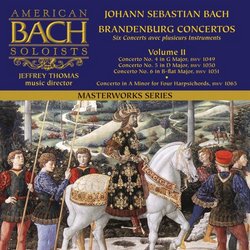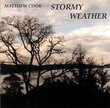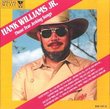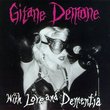| All Artists: American Bach Soloists Title: Bach Brandenburg Concertos 4-6 (Vol 2 of 2) American Bach Soloists Jeffrey Thomas Members Wishing: 0 Total Copies: 0 Label: American Bach Soloists Release Date: 12/1/2007 Genre: Classical Style: Number of Discs: 1 SwapaCD Credits: 1 UPC: 842841078929 |
Search - American Bach Soloists :: Bach Brandenburg Concertos 4-6 (Vol 2 of 2) American Bach Soloists Jeffrey Thomas
 | American Bach Soloists Bach Brandenburg Concertos 4-6 (Vol 2 of 2) American Bach Soloists Jeffrey Thomas Genre: Classical
Why make another recording of Bach's Brandenburg Concertos? Two words: basso continuo! As Johann Sebastian Bach went to some trouble indeed to provide the Margrave Christian Ludwig of Brandenburg with a stunning asso... more » |
Larger Image |
CD Details
Synopsis
Product Description
Why make another recording of Bach's Brandenburg Concertos? Two words: basso continuo! As Johann Sebastian Bach went to some trouble indeed to provide the Margrave Christian Ludwig of Brandenburg with a stunning assortment of unique orchestrations in these six Brandenburg concertos, we seized the opportunity to instill even more variety in these timeless works by varying the colors of the only part of Bach s orchestra that is available to such an indulgence: the basso continuo. Although Bach s indications call only generically for continuo, or at times most specifically violone e cembalo, a continuo group can include any one or several of the typical bass-line and realizing instruments, including the harpsichord, organ, lute, violoncello, bassoon, violone, and contrabass. The choice of string instrument used to play the continuo line (other than violoncello) is less free: Specific indications regarding the nature of the bass line and its range (lowest note) almost always result in an obvious solution. Our scheme regarding the realizing instruments - those used to play chordal harmonizations above and along with the bass line - for these performances is as follows: For the first concerto, in keeping with the larger scale of the work, we employ not one but two harpsichords, a practice borrowed from the theater; a 16' violone is used, the lowest string tuned down to C1. For the second, we utilize a chamber organ rather than a harpsichord (chamber organs were a very popular continuo instrument for secular as well as sacred music, and provide a highly complementary timbre to the solo trumpet); an 8' G violone is used, since the violoncello and continuo line are often an octave apart, meaning that the use of a 16' instrument would cause a two-octave separation between it and the 'cello. For the third, borrowing from Bach s scoring for three different string groups (violins, violas, and violoncellos), we use three instruments (organ, harpsichord, and lute); a 16' violone is used, the lowest string tuned down to C1. For the fourth, a harpsichord and lute; a 16' violone is used (normal tuning with D1 as the lowest string). We think the fifth s cembalo concertato stands by itself; a 16' violone is used (normal tuning with D1 as the lowest string). And for the sixth, with its 'royal' instrumentation of two violas da gamba, we call upon two lutes to complete the sonority; an 8' G violone is used due to the lowest pitch (B-flat0) of the part. All-in-all this is a superb recording that features some of the most significant period instrument performers including Elizabeth Blumenstock and Jorg-Michael Schwartz (violins), Sandra Miller (flute), Aldo Abreu (recorder), John Butt (harpsichord), and the astonishingly brilliant John Thiessen (natural trumpet), all playing under the inspiring direction of conductor and music director Jeffrey Thomas.
Similar CDs
| Matthew Cook Stormy Weather Genres: Jazz, New Age, Pop Label: Arianna Recording | |
| Jr. Hank Williams Those Tear Jerking Songs Genres: Country, Pop, Rock, Classic Rock, Metal Label: Special Music | |
| Gitane Demone With Love & Dementia Genres: Alternative Rock, Pop, Rock Label: Cleopatra | |

 Track Listings (12) - Disc #1
Track Listings (12) - Disc #1

